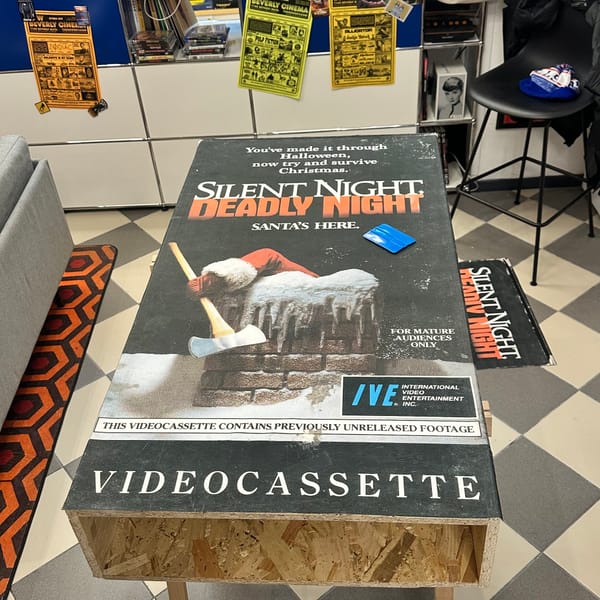Guest Post: Bricolage as a way of life
We are excited to share the next in a series of guest blog posts. This one was written by Sarah Honeychurch .

At the monthly meeting I shared my blogger’s journey, and talked about the importance to me of having a community. I also touched on the particular importance to me of finding the DS106 community, and here I want to focus on one particular activity within that community, the Daily Create.
As it says on its web pages, The Daily Create is a “space for regular practice of spontaneous creativity”. Every day at 5am EST a new challenge called the TDC (Today’s Daily Create) is posted on a WordPress blog thanks to the technical wizardry of Alan Levine. This might be a visual challenge asking you to share a photo you’ve taken or photo edit one that is shared. Maybe you’ll be asked to write a poem or a story, produce a video or make a gif. Often the prompt just asks you to respond in a creative way without stipulating a medium. And, even if the prompt does indicate a specific medium you don’t have to comply – it’s up to you what you do (or don’t) do. Some people complete the TDC every day, others dip in and out from time to time. There’s no prizes, and no sanctions. The only rule is to MAKE ART, DAMMIT! Also note – it doesn’t even have to be good art – all of the images in this post have been created by me as responses to past TDCs.

Every day, at as close to 10am as I can manage, I open the Daily Create web page and look to see what the day’s challenge is. Sometimes I respond immediately, other times I take a while to ponder but every day, without fail, since November 22nd 2017 I have completed the daily challenge. It’s such a small thing – a daily creative challenge that’s only intended to take fifteen to twenty minutes to complete. But for me it’s the tip of an iceberg. – it’s ingrained in my way of life – as we say, #DS106 is #4life.

When I started participating there was a leaderboard, and back then I never anticipated that later on I’d be one of the top three. I always have mixed feelings about leaderboards – it can feel great to be at the top of one, but I think they can be really demoralising for those who are at the bottom, and disincentivising for those who are new and feel that they will never be able to catch the leaders. Anyway, at the moment that functionality is not working as it pulled data from Twitter, and I don’t miss it. But the TDC web pages also collate all of a participant’s responses, and looking through mine makes me realise how much of what I now do easily has been honed through this daily activity.

Participating in the TDC has taught me about creative commons licences and the importance of honouring the creator, it’s helped me to learn how to learn how to use tools like GIMP in order to manipulate images and create gifs, it’s given me the confidence to know that I can download a new tool and learn how to use it when I want to. In particular, knowing that there is an affinity network around DS106 in all of its iterations has been invaluable to me because I have been able to watch others and learn from them, and know that I can reach out and ask for help if I need it.
In fact, it’s so ingrained now in my daily practice that as well as participating in the TDC I am also one of the main people working behind the scenes in order to ensure that it is published every morning. This means that a part of my mind is constantly logged into the TDC, subconsciously keeping an eye out for possible things to adapt for future TDCs, and making me prone to nudge others to submit their ideas when I see them post something suitable on Mastodon.

For a long time I thought that I had to keep this part of my life partitioned off from my work life, but as time has gone on I have realised that not only is it important to me, it actually helps me to be better at my day job. So nowadays I don’t hide this side of my life or feel I need to apologise for taking time to play every day – and I have written academic papers about the importance of what I call ‘serious fun’. My PhD thesis introduces the concept and pays tribute to DS106 and other affinity spaces, a conference paper (with fellow remixer Wendy) discusses a collaborative activity that began as a TDC and grew arms, legs and wings, I have a book chapter about how to use bricolage principles to develop models of learning that allow learners in HE to experiment and have fun in a safe space, and I have even written about how bricolage underpins my attitude to scholarship of teaching and learning (SoTL).

As my friend Ron Leunissen said to me when he first told me about the TDC, you can only really understand how much fun something is by doing it for yourself, So if you want to find out more about the TDC then please do join us. But beware – it really is #4life.
Sarah Honeychurch works in Academic and Digital Development at the University of Glasgow. She has a PhD in participatory learning, which taught her about the importance of play for creativity and for authentic learning and this is where she coined the phrase ‘serious fun’ to describe enjoyable and authentic learning experiences. She enjoys connecting with likeminded lifelong learners in online communities and collaborating in practices of digital remix with her fellow bricoleurs.

Sarah and her husband live in Glasgow and are owned by two cats called Cagney and Lacey. When she is not playing around on the internet she enjoys doodling, knitting, and playing one of her many ukuleles very badly.




